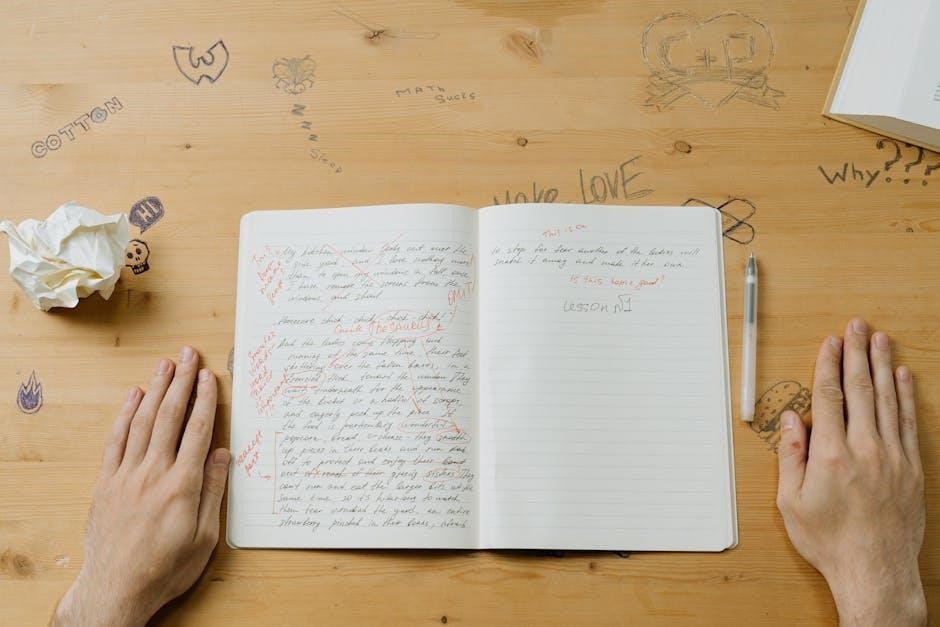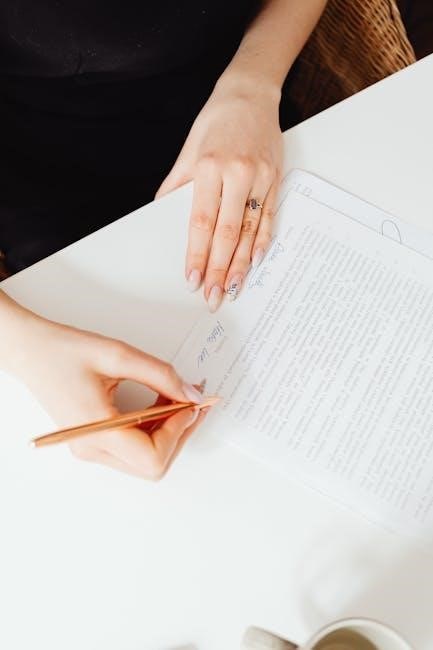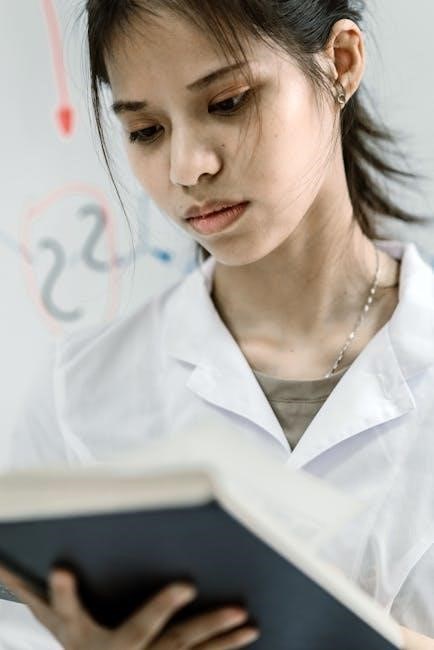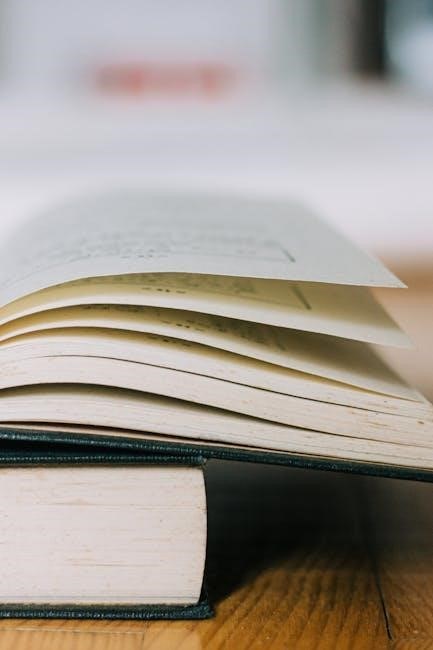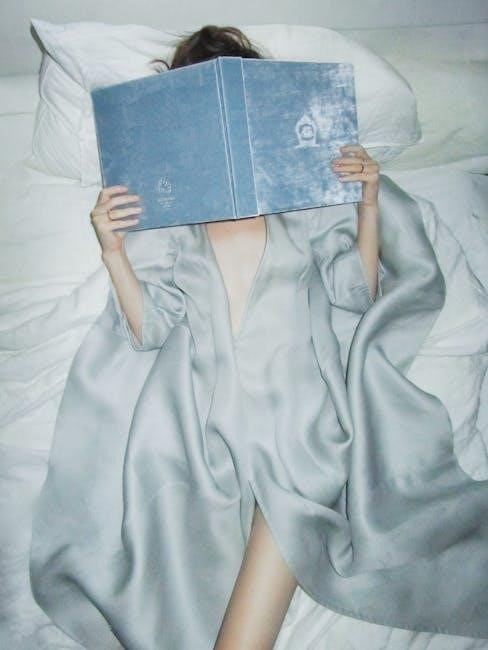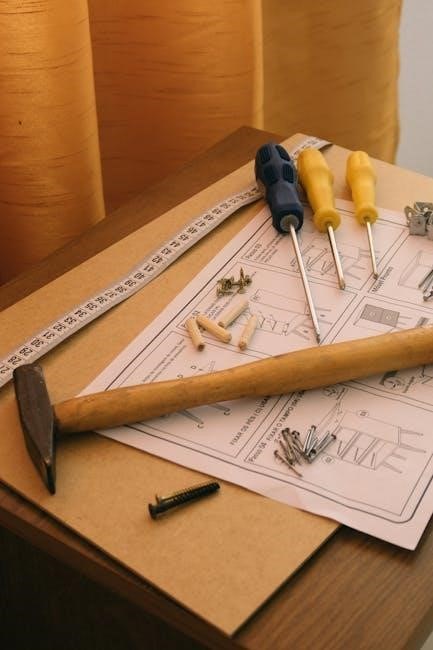Overview of “Basic English Grammar” 5th Edition
The 5th edition offers comprehensive coverage, frequently referencing downloadable PDF resources for supplemental practice. Multiple websites showcase images of the textbook,
highlighting its availability and widespread use in English language learning.
Authors and Publication Details
Betty Schrampfer Azar and Stacy A. Hagen are the esteemed authors of “Basic English Grammar,” now in its 5th edition. This widely-used textbook is published by Pearson Education, a leading provider of educational materials. While a direct link to a Pearson-hosted PDF isn’t readily available, numerous websites display images referencing the book. These images, often sourced from tienganhedu.com, showcase the cover and indicate its current availability. The publication date isn’t explicitly stated in the provided snippets, but the 5th edition is actively promoted and utilized as of late 2023 and 2025.
Target Audience and Skill Level
“Basic English Grammar,” 5th Edition, is primarily designed for English language learners at the beginner to intermediate levels. It’s suitable for students in classrooms or those undertaking self-study. The textbook’s focus is building a strong foundation in core grammatical concepts. While PDF versions circulate, they are often supplemental to the physical text. The material is accessible, with clear explanations, making it ideal for individuals seeking to improve their English proficiency, regardless of their learning environment or access to digital resources.
Key Features and Improvements in the 5th Edition
The 5th edition maintains its clarity while incorporating updated examples reflecting contemporary English usage. Numerous online resources, including potential PDF downloads, complement the core textbook. Visual aids and a reorganized structure enhance comprehension. While the availability of a complete, legal PDF is debated, the book’s strength lies in its detailed explanations and abundant practice exercises. It continues to be a popular choice for educators and learners alike, offering a solid grammatical foundation.
Core Grammatical Concepts Covered
The text comprehensively covers nouns, verbs, adjectives, and prepositions, often with supporting PDF materials. Foundational grammar principles are thoroughly explained and practiced.
Nouns and Pronouns
This section meticulously details noun types – common, proper, concrete, abstract, and collective – providing clear examples for each. The 5th edition’s resources, often available as supplemental PDFs, emphasize pronoun usage, including personal, possessive, reflexive, and demonstrative pronouns.
It clarifies pronoun-antecedent agreement, a common area of difficulty for learners. The textbook’s approach, reinforced by practice exercises found in accompanying PDF materials, ensures a solid understanding of these fundamental building blocks of English sentences, fostering accurate and confident communication.
Verbs: Tenses, Moods, and Voice
The 5th edition provides extensive verb conjugation charts, illustrating all twelve major tenses with detailed examples. Accessible PDF resources supplement this, offering focused practice on irregular verbs and tense consistency.
It thoroughly explains verb moods – indicative, imperative, and subjunctive – and clarifies active and passive voice, demonstrating their impact on sentence structure. The textbook’s approach, often reinforced through downloadable PDF exercises, aims to build a strong foundation in verb usage for clear and effective communication.
Adjectives and Adverbs
The 5th edition meticulously details adjective types – descriptive, quantitative, demonstrative, and possessive – with practical examples. Supplementary PDF materials offer targeted exercises for correct adjective order and comparative/superlative formation.
It comprehensively covers adverbs of time, place, manner, and degree, clarifying their function in modifying verbs, adjectives, and other adverbs. Downloadable PDF practice reinforces understanding, ensuring learners can effectively utilize adjectives and adverbs to enhance sentence clarity and precision.
Prepositions and Conjunctions
The 5th edition provides a thorough exploration of prepositions – of place, time, and direction – clarifying their often nuanced usage. Accompanying PDF resources offer extensive practice identifying and correctly employing prepositions in various contexts.
It also details coordinating, subordinating, and correlative conjunctions, explaining how they connect words, phrases, and clauses. Downloadable PDF exercises reinforce understanding, enabling learners to construct complex and coherent sentences with accurate conjunctional links.

Sentence Structure and Types
The textbook’s PDF supplements illustrate simple, compound, and complex sentence construction. Online resources demonstrate how to build grammatically correct sentences, enhancing writing skills.
Simple, Compound, and Complex Sentences
The “Basic English Grammar” 5th edition, often accessed via PDF, meticulously breaks down sentence structures. It clearly defines simple sentences – one independent clause – and builds from there. Compound sentences, joined by conjunctions, are thoroughly explained with examples.
Complex sentences, featuring independent and dependent clauses, receive detailed attention. PDF resources often provide exercises focusing on identifying and constructing each type. The textbook emphasizes proper punctuation and clause relationships, crucial for clarity and effective communication, solidifying understanding through practical application.
Subject-Verb Agreement
The 5th edition of “Basic English Grammar,” frequently available as a PDF, dedicates significant attention to subject-verb agreement. It systematically covers singular and plural subjects, ensuring verbs correctly correspond in number. Irregularities, like collective nouns and indefinite pronouns, are addressed with clear explanations and illustrative examples.
PDF supplements often include targeted exercises to reinforce this crucial concept. The textbook emphasizes avoiding common errors, particularly with intervening phrases, and mastering agreement in complex sentence structures, promoting grammatical accuracy.
Phrases and Clauses
“Basic English Grammar’s” 5th edition, often found in PDF format, provides a detailed exploration of phrases and clauses. It distinguishes between various phrase types – noun, verb, prepositional, etc. – and their functions within sentences. The text thoroughly explains independent and dependent clauses, crucial for constructing complex sentences.
PDF resources accompanying the book frequently offer practice identifying and combining clauses effectively. Mastering these concepts, as presented in the textbook and its supplemental PDFs, is key to fluent and accurate English writing.

Parts of Speech in Detail
The 5th edition, accessible in PDF form, meticulously dissects each part of speech. It offers clear explanations and examples for comprehensive understanding and application.
Detailed Explanation of Noun Types
The “Basic English Grammar” 5th edition, often found as a downloadable PDF, provides a thorough exploration of noun classifications. It distinguishes between common and proper nouns, concrete and abstract nouns, countable and uncountable nouns, and collective nouns.
The textbook clarifies each type with illustrative examples, aiding comprehension. Furthermore, it details how nouns function within phrases and sentences, emphasizing their roles as subjects, objects, and complements. This detailed approach, readily available in the PDF version, ensures learners grasp the nuances of noun usage.
Verb Conjugation Charts
The “Basic English Grammar” 5th edition, accessible in PDF format, features extensive verb conjugation charts. These charts systematically illustrate how verbs change across different tenses – present, past, and future – and moods, including indicative, imperative, and subjunctive.
The textbook also covers active and passive voice constructions, providing clear examples for each verb form. These charts, a key component of the PDF resource, are designed to help learners master verb usage and construct grammatically correct sentences with confidence.
Types of Adjectives and Their Usage
The 5th edition’s PDF version thoroughly explains various adjective types – descriptive, quantitative, demonstrative, possessive, and proper. It details how each modifies nouns or pronouns, enhancing sentence clarity and precision.
The textbook provides numerous examples illustrating correct adjective placement and comparative/superlative forms. Learners gain practical skills in using adjectives effectively, enriching their writing and speech. The PDF resource reinforces these concepts with exercises and detailed explanations.
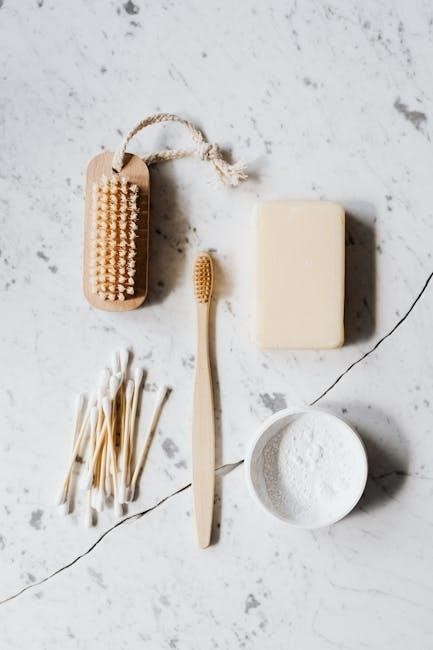
Common Grammatical Errors and How to Avoid Them
The 5th edition’s PDF focuses on correcting errors like misplaced modifiers and pronoun disagreements. It offers clear explanations and practice to improve accuracy.
Misplaced Modifiers
The “Basic English Grammar” 5th edition PDF thoroughly addresses misplaced modifiers, a common source of confusion for learners. It explains how these phrases, intended to describe specific words, can unintentionally modify the wrong element in a sentence, leading to ambiguity.
The textbook provides numerous examples illustrating incorrect placement and demonstrates how to revise sentences for clarity. It emphasizes the importance of positioning modifiers as close as possible to the words they describe, ensuring the intended meaning is conveyed effectively. Practice exercises within the PDF reinforce this crucial skill.
Pronoun Agreement Issues
The “Basic English Grammar” 5th edition PDF dedicates significant attention to pronoun agreement, a fundamental aspect of clear writing. It meticulously explains the rules governing pronoun-antecedent agreement – ensuring pronouns correctly reflect the number and gender of the nouns they replace.
The resource clarifies challenges with indefinite pronouns and collective nouns, offering guidance on avoiding common errors. Numerous examples and practice exercises within the PDF help learners master this skill, promoting grammatical accuracy and polished communication.
Incorrect Verb Tense Usage
The “Basic English Grammar” 5th edition PDF thoroughly addresses incorrect verb tense usage, a frequent stumbling block for English learners. It provides detailed charts and explanations of all twelve major verb tenses, clarifying their appropriate contexts and applications.
The PDF emphasizes recognizing time signals and understanding aspect (simple, continuous, perfect) to select the correct tense. Practice exercises, often with answer keys, reinforce correct tense selection, improving clarity and precision in both writing and speech.

Using the Textbook for Self-Study
The PDF version enables independent learning with accessible exercises and answer keys. Learners can practice at their own pace, reinforcing concepts effectively.
Effective Study Techniques
Utilizing the “Basic English Grammar” 5th Edition PDF effectively requires a structured approach. Begin by actively reading each chapter, highlighting key concepts and grammatical rules.
Supplement this with consistent practice using the textbook’s exercises and, if available, online resources linked to the PDF. Focus on areas where you struggle, revisiting explanations and completing additional drills.
Regular self-testing, utilizing the answer keys, is crucial for identifying weaknesses. Consider creating flashcards for verb conjugations and common errors to aid memorization and retention.
Practice Exercises and Answer Keys
The “Basic English Grammar” 5th Edition PDF typically includes a wealth of practice exercises designed to reinforce learning. These range from fill-in-the-blanks and sentence completion to more complex tasks like paragraph writing and error correction.
Crucially, the PDF should contain comprehensive answer keys, allowing for self-assessment and independent study.
Regularly checking your answers against the key is vital for identifying areas needing improvement. Don’t simply look at the correct answer; understand why your initial attempt was incorrect.
Online Resources and Companion Website
Many sources suggest the “Basic English Grammar” 5th Edition is supported by extensive online resources. While a direct official companion website isn’t prominently advertised, numerous platforms offer supplemental materials related to the textbook’s content.
These resources often include interactive quizzes, downloadable audio files for pronunciation practice, and additional exercises.
Searching for “Azar-Hagen Grammar 5th Edition” alongside terms like “exercises” or “audio” can yield valuable results, potentially including PDF-based practice materials.
“Basic English Grammar” vs. Other Grammar Resources
Compared to “Understanding and Using English Grammar,” this text offers a more foundational approach, with readily available PDF practice materials online for self-study.
Comparison with “Understanding and Using English Grammar”
“Basic English Grammar” serves as an excellent starting point, particularly for beginners, while “Understanding and Using English Grammar” delves into more complex structures. Both texts, authored by Azar-Hagen, are widely recognized, yet differ in scope.
Numerous online resources offer PDF versions of practice exercises for “Basic English Grammar,” facilitating self-paced learning. Conversely, finding complete PDF copies of “Understanding and Using English Grammar” legally proves more challenging, often directing users to purchase the full textbook or specific chapters.
The foundational nature of “Basic English Grammar” makes it ideal for those needing a solid grasp of core concepts before tackling advanced grammatical nuances.
Alternatives for Different Learning Styles
For visual learners, supplementing “Basic English Grammar” with online video tutorials and interactive exercises is beneficial. While PDF versions offer static practice, platforms like YouTube provide dynamic explanations.
Auditory learners might prefer accompanying audio resources, though these are less readily available as free PDFs. Learners who thrive on collaboration could join online forums or language exchange groups.
Several websites offer alternative grammar workbooks and apps, catering to diverse preferences. Exploring these options alongside the textbook’s PDF materials can enhance comprehension and retention.
Cost and Accessibility
The physical “Basic English Grammar” 5th Edition varies in price depending on the retailer, typically ranging from $30 to $60. While legal PDF copies aren’t freely available, some institutions offer access through digital libraries.
Beware of unauthorized PDF downloads, as these pose copyright risks and may contain malware. Numerous websites advertise the book, but verifying legitimacy is crucial.
Considering the cost, exploring library resources or used textbook options can provide affordable access to this valuable grammar resource.

The Role of Context in Grammar
Though PDFs aid study, understanding grammar’s nuance requires recognizing formal versus informal usage, as the 5th edition illustrates through varied examples and applications.
Formal vs. Informal English
The “Basic English Grammar” 5th edition acknowledges the spectrum of English usage, differentiating between formal and informal contexts. While PDF resources offer practice, mastering this distinction is crucial. Formal writing, often found in academic papers or professional correspondence, demands strict adherence to grammatical rules.
Conversely, informal English, prevalent in casual conversations or personal emails, allows for contractions, colloquialisms, and a more relaxed sentence structure. The textbook likely provides examples illustrating these differences, helping learners adapt their language appropriately based on the situation and audience. Recognizing this duality is key to effective communication.
Grammar in Writing vs. Speaking
“Basic English Grammar,” 5th edition, likely addresses the differing demands of written and spoken English. While PDF practice materials reinforce rules, spontaneous speech often deviates. Writing allows for careful construction and editing, prioritizing grammatical accuracy and clarity.
Conversely, speaking is often characterized by incomplete sentences, fillers (“um,” “like”), and contractions. The textbook probably highlights these differences, emphasizing that grammatical flexibility is acceptable—and even natural—in conversation. Mastering both forms, aided by supplemental PDFs, is vital for comprehensive language proficiency.
Regional Variations in English Grammar
“Basic English Grammar,” 5th edition, may briefly acknowledge that English isn’t monolithic; variations exist. While a core grammar is taught, PDF resources likely don’t delve deeply into regional dialects. American, British, Australian, and other Englishes differ in vocabulary, pronunciation, and even grammatical structures.
For example, collective nouns take different verb forms. The textbook probably focuses on standard English, but awareness of these variations—supplemented by external research—is crucial for effective communication globally. PDF materials may offer limited exposure to these nuances.

Advanced Topics Briefly Introduced
The 5th edition’s PDF supplements may hint at complex structures. Conditional sentences, modal verbs, and relative clauses receive introductory coverage, prompting further study.
Modal Verbs and Their Nuances
The “Basic English Grammar” 5th edition, often found as a PDF download, introduces modal verbs – can, could, may, might, must, shall, should, will, and would. These verbs express possibility, permission, obligation, and more, adding subtle shades of meaning.
While the textbook provides a foundational understanding, mastering their nuances requires extensive practice. Supplemental PDF materials, if legally obtained, can offer additional exercises focusing on correct usage in various contexts. Understanding these subtleties is crucial for achieving fluency and accuracy in English.
Conditional Sentences
The “Basic English Grammar” 5th edition, frequently available as a PDF, dedicates sections to conditional sentences – expressing what would happen under certain conditions. These sentences utilize structures like “If + present simple, will + base verb” for general truths or future possibilities.
The textbook explains different types (zero, first, second, third) and their specific uses. Supplementary PDF resources, when legally sourced, can provide targeted practice. Mastering conditionals is vital for expressing hypothetical situations and logical reasoning in English.
Relative Clauses
The 5th edition of “Basic English Grammar,” often found as a PDF for study, thoroughly covers relative clauses – essential for adding detail to nouns. These clauses, beginning with relative pronouns (who, which, that) or adverbs (where, when), connect ideas and provide descriptive information.
The textbook clarifies defining and non-defining clauses, alongside reduced relative clauses. Legally obtained PDF supplements offer extra exercises. Understanding relative clauses enhances sentence complexity and clarity, crucial for effective English communication.

PDF Availability and Legality
Numerous sites offer “Basic English Grammar” 5th edition PDFs, but caution is advised. Prioritize legal sources to avoid copyright infringement and malware risks.
Where to Find Legal PDF Copies
Locating legitimate PDF copies of “Basic English Grammar,” 5th edition, requires careful navigation. Official publisher websites, such as Pearson Education, are the most reliable source, often offering access with textbook purchase or institutional subscriptions.
Educational platforms and online bookstores like Amazon or Barnes & Noble may sell authorized digital versions.
Beware of unofficial websites promising free downloads, as these frequently violate copyright laws and may contain harmful software.
Always verify the source’s authenticity before downloading any PDF to ensure legality and safety.
Risks of Downloading Illegal PDFs
Downloading unauthorized PDF copies of “Basic English Grammar,” 5th edition, presents significant risks. These files often harbor malware, viruses, and spyware, compromising your device’s security and personal data.
Such downloads constitute copyright infringement, potentially leading to legal repercussions.
Furthermore, illegal PDFs frequently have poor formatting, missing content, or are simply unreadable.
Supporting legitimate sources ensures quality materials and protects both your digital wellbeing and the rights of the authors and publishers.
Copyright Considerations
“Basic English Grammar,” 5th edition, is protected by international copyright laws. Unauthorized reproduction, distribution, or modification of the textbook, including its PDF version, is strictly prohibited.
Copyright safeguards the intellectual property of the authors, Betty Schrampfer Azar and Stacy Hagen.
Obtaining the textbook through legitimate channels – purchasing a physical copy or accessing authorized digital versions – respects these rights and supports continued educational resource development.

Reviews and Reception of the 5th Edition
User feedback indicates the PDF version is a convenient study aid, though reviews primarily focus on the textbook’s content and pedagogical approach.
Student Feedback
Many students appreciate the accessibility of the “Basic English Grammar” 5th edition in PDF format, finding it convenient for studying on various devices. The digital version facilitates easy note-taking and searching for specific grammar points; However, some users express concern regarding the legality of obtaining PDFs from unofficial sources.
Positive comments highlight the textbook’s clear explanations and ample practice exercises, even within the PDF format. Students also value the accompanying audio resources, when available with the PDF. Conversely, a few learners mention potential formatting issues when viewing the PDF on certain devices.
Teacher Perspectives
Educators acknowledge the “Basic English Grammar” 5th edition’s value as a foundational resource, even when utilized in PDF form. The textbook’s structured approach aids in lesson planning and provides a consistent framework for grammar instruction. However, teachers caution against relying solely on potentially illegal PDF copies.
Many instructors prefer the physical textbook for classroom activities, but recognize the PDF’s utility for supplemental materials and remote learning. Concerns are raised about copyright infringement and the lack of official support for unauthorized PDF versions.
Critical Analysis of the Textbook’s Strengths and Weaknesses
The 5th edition’s strength lies in its clear explanations and abundant practice exercises, even when accessed via PDF. However, the proliferation of unofficial PDF copies raises concerns about quality and completeness. While convenient, these PDFs may lack key features like audio components or answer keys.
A weakness is the potential for outdated information if using an older PDF version. The textbook’s visual appeal is diminished in grayscale PDF formats, impacting learner engagement. Legally obtained PDFs offer a superior learning experience.

Future Editions and Updates
Future updates may address PDF accessibility and legality concerns, potentially integrating digital resources directly. Evolving language trends will necessitate revisions to maintain relevance and accuracy.
Potential Changes in Upcoming Editions
Considering the current digital landscape, future editions of “Basic English Grammar” may prioritize enhanced integration with online resources. This could involve officially sanctioned, legally accessible PDF versions of the textbook and accompanying exercises. Addressing concerns about illegally downloaded PDFs is crucial.
Updates might also include interactive elements within a companion website, offering dynamic practice and immediate feedback. Furthermore, the authors could incorporate more explicit guidance on navigating the abundance of online grammar resources, distinguishing reliable sources from less credible ones.
Impact of Evolving Language Trends
The accessibility of “Basic English Grammar” as a PDF influences how learners engage with evolving language trends. While the core grammatical principles remain constant, contemporary usage, particularly in digital communication, is rapidly changing. Future editions may need to address these shifts.
Acknowledging the influence of social media and informal writing styles is vital. The textbook could offer guidance on adapting formal grammar rules to different contexts, while also emphasizing the importance of clarity and effective communication, regardless of the platform.
The Textbook’s Long-Term Relevance
Despite the proliferation of online resources and the availability of the “Basic English Grammar” 5th edition as a PDF, its structured approach ensures continued relevance. The textbook provides a foundational understanding of English grammar, a skill consistently valuable regardless of technological advancements.
Its enduring strength lies in its clear explanations and comprehensive exercises. While digital tools offer convenience, a solid grammatical base remains crucial for effective communication, making this textbook a lasting resource for learners of all levels.




























